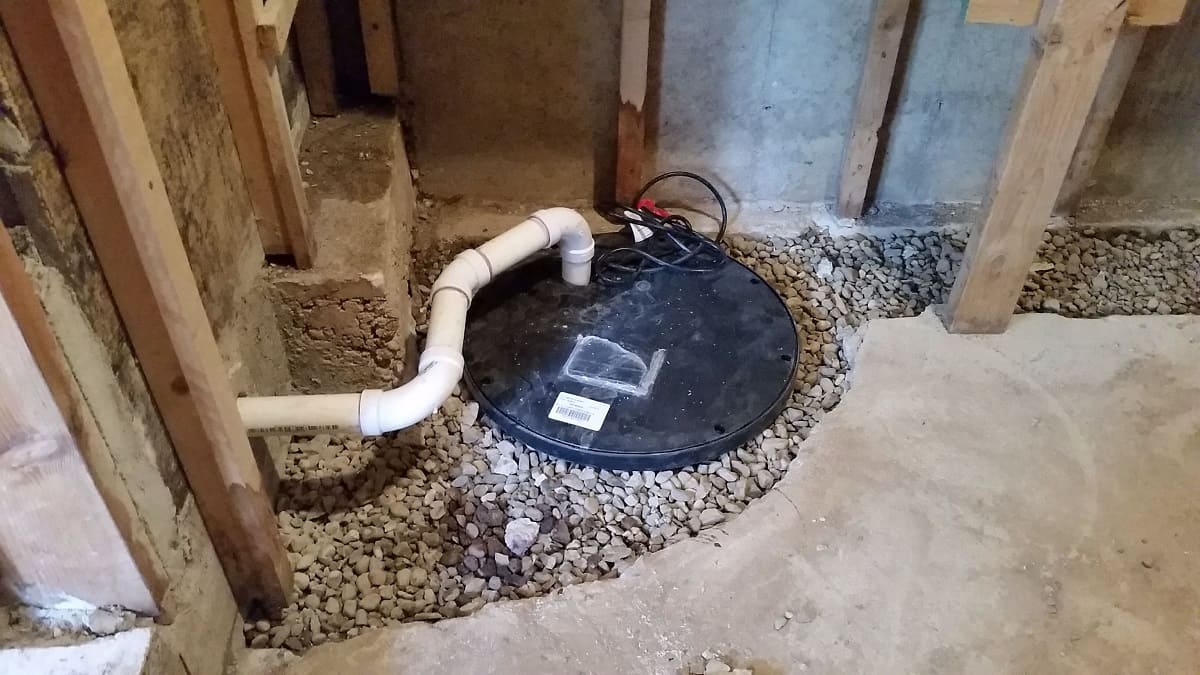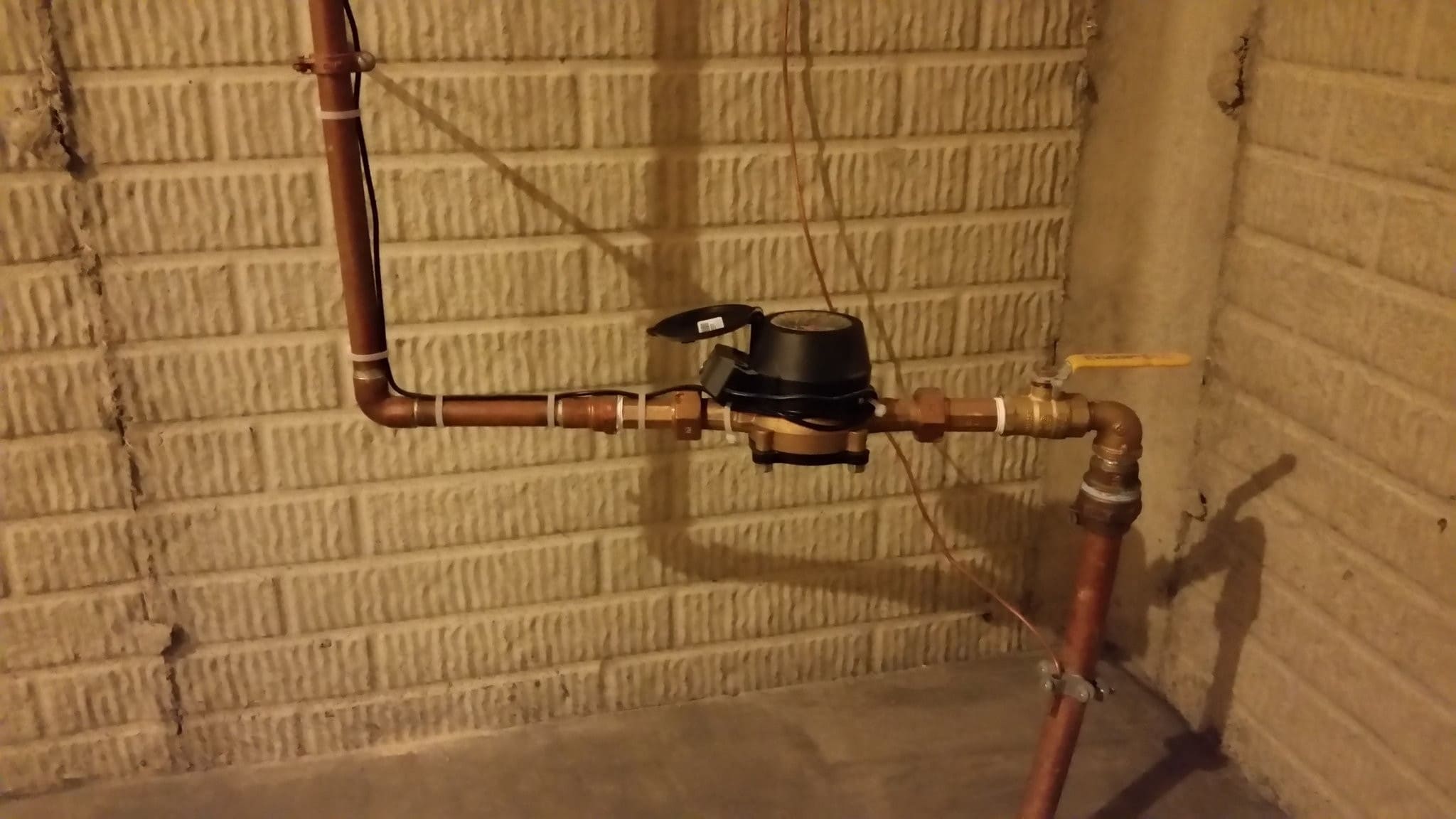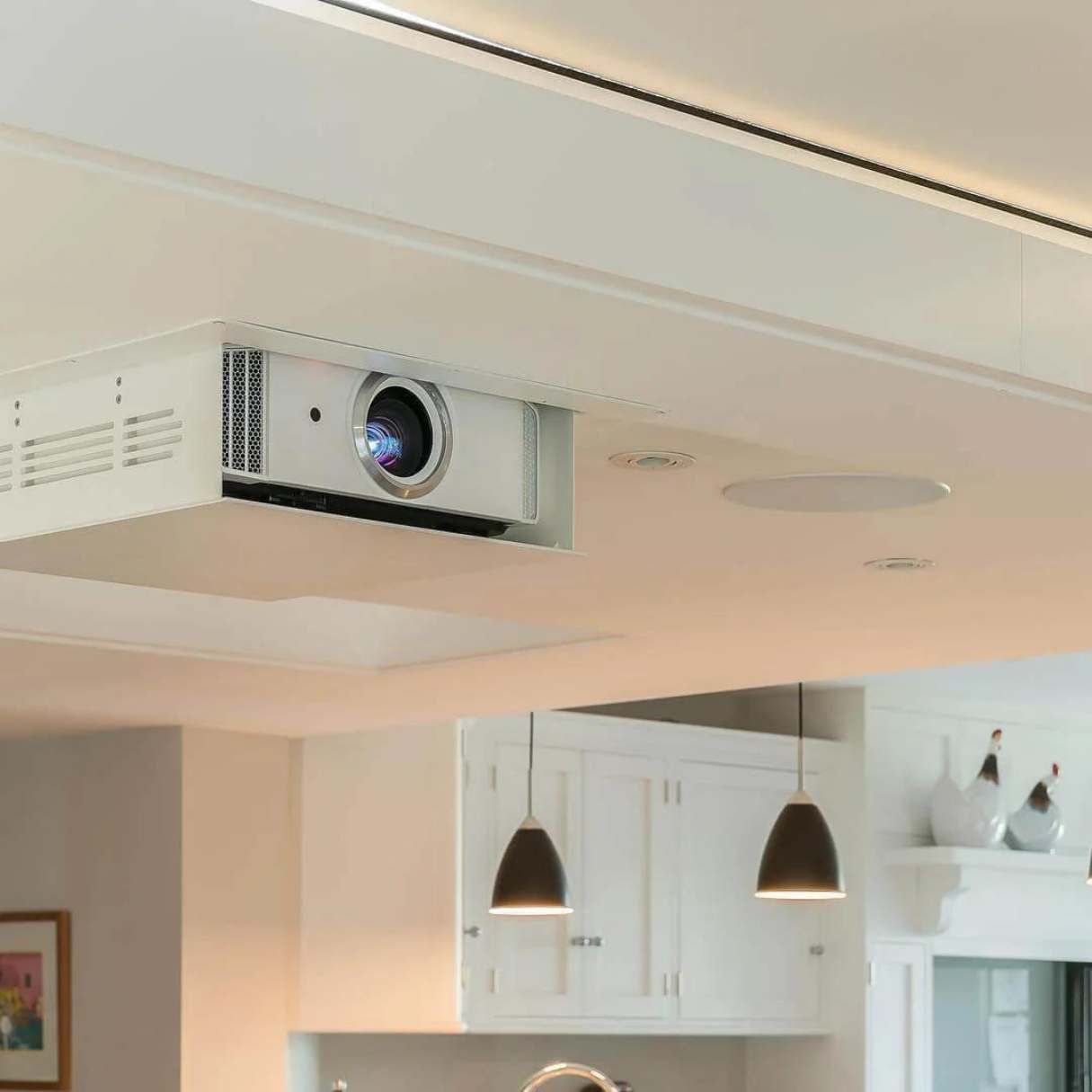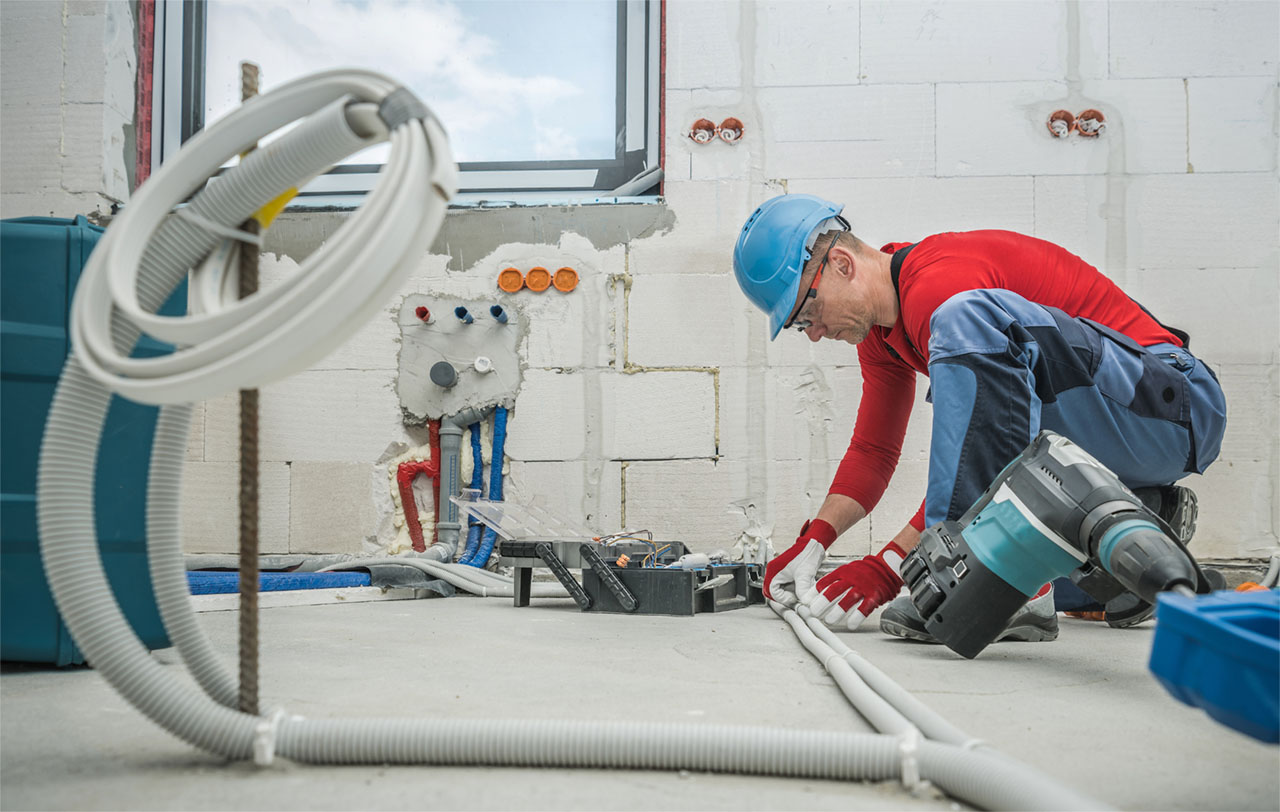

Articles
How To Hide Sump Pump In Basement
Modified: August 30, 2024
Discover effective ways to hide a sump pump in your basement with these helpful articles. Find creative solutions to keep your space looking clean and organized.
(Many of the links in this article redirect to a specific reviewed product. Your purchase of these products through affiliate links helps to generate commission for Storables.com, at no extra cost. Learn more)
Introduction
Having a sump pump in your basement is essential for preventing water damage and keeping your home dry and safe. However, the appearance of a sump pump can be unsightly and disrupt the aesthetic appeal of your basement.
In this article, we will explore the importance of hiding a sump pump in the basement and provide you with a step-by-step guide on how to do it effectively. We will also discuss the factors to consider, safety precautions to take, and alternative methods for concealing your sump pump.
By learning how to hide your sump pump, you can maintain the functionality of the device while also creating a more visually appealing space in your basement. So, let’s dive in and discover how to transform your basement into a functional and beautiful area.
Key Takeaways:
- Concealing your sump pump in the basement not only enhances the aesthetics of your space but also protects the pump from damage, increases the value of your home, and creates a more inviting environment for potential buyers or guests.
- Prioritizing safety, proper ventilation, and regular maintenance are essential when hiding a sump pump. By following these steps, you can effectively conceal your sump pump while ensuring a safe and functional hiding solution.
Read more: How Much To Install Sump Pump In Basement
Importance of Hiding a Sump Pump in the Basement
A sump pump is an essential piece of equipment for any basement, as it helps to prevent flooding and water damage by removing excess water that accumulates around the foundation of your home. However, the appearance of a sump pump can be less than desirable, often consisting of a large, bulky machine with exposed pipes and cords.
Hiding your sump pump in the basement serves multiple purposes. Firstly, it helps to improve the overall aesthetics of the space, creating a more visually appealing and inviting environment. A hidden sump pump allows you to transform your basement into a functional living area, free from eyesores and distractions.
Additionally, concealing your sump pump can help to protect it from accidental damage. Basements are often used for storage or as recreational areas, and exposed sump pumps can be vulnerable to knocks, bumps, or spills. By hiding the sump pump, you can ensure its longevity and maintain its functionality without the risk of unintentional damage.
Furthermore, hiding a sump pump in the basement can increase the value of your home. When potential buyers or guests tour your home, an unsightly or poorly-hidden sump pump can be a significant turn-off. By taking the time to properly conceal the sump pump, you create a more attractive and marketable space, potentially increasing the resale value of your property.
Importantly, hiding a sump pump doesn’t mean compromising its accessibility. It’s crucial to design a concealment solution that allows for easy access and regular maintenance. This ensures that you can continue to monitor and service the sump pump as needed, without having to dismantle or disassemble any elaborate hiding structures.
Overall, hiding a sump pump in the basement is essential for improving the appearance and functionality of the space. By enhancing the aesthetics, protecting the pump from damage, and increasing the value of your home, you can enjoy a basement that is both beautiful and practical.
Factors to Consider Before Hiding a Sump Pump
Before you embark on hiding your sump pump in the basement, there are several important factors that you should consider. These factors will help you make informed decisions and ensure that the hiding process is efficient and effective.
1. Accessibility: It is crucial to ensure that the sump pump remains easily accessible after it has been hidden. This allows for regular maintenance, such as cleaning out the sump pit or checking the pump’s operation. Consider utilizing a design that incorporates a removable cover or access panel to provide convenient access to the pump.
2. Ventilation: Sump pumps generate heat during operation, so it is essential to provide proper ventilation when concealing them. Inadequate ventilation can lead to overheating and reduced performance. Plan for sufficient airflow and incorporate vents or openings in your hiding solution to dissipate heat effectively.
3. Drainage: Ensure that the sump pump’s drainage system remains unobstructed and functional when hiding it. Consider the location of the pump’s discharge pipe and design the concealment solution in a way that allows for proper drainage and ensures that water is effectively directed away from the foundation of your home.
4. Noise Reduction: Sump pumps can be noisy, especially if they are old or not properly installed. Before hiding the pump, it is essential to address any issues that may contribute to excessive noise. Repair or replace any malfunctioning components, insulate the pipes, or consider incorporating noise-reducing materials in your concealment design.
5. Future Repairs or Upgrades: Remember to plan for any potential repairs or upgrades that may be required in the future. Opt for a hiding solution that allows for easy removal or access to the sump pump, should repairs or upgrades become necessary. This will save you time and effort in the long run.
6. Aesthetics and Space: Consider your design preferences and the available space in your basement. Choose a hiding solution that not only effectively conceals the sump pump but also enhances the overall aesthetics of the area. Take into account the size, shape, and color of the hiding structure to ensure it blends seamlessly with the rest of the space.
By carefully considering these factors, you can ensure that your hiding solution addresses all necessary requirements while allowing for easy access, proper ventilation, and effective drainage. This will result in a functional, visually appealing, and long-lasting concealment of your sump pump.
Safety Precautions When Hiding a Sump Pump
While hiding a sump pump in the basement can improve the appearance of your space, it is crucial to prioritize safety throughout the process. By taking the necessary precautions, you can ensure the well-being of both yourself and your home. Here are some important safety measures to keep in mind:
1. Turn off the power: Before attempting any work on the sump pump or its surrounding area, make sure to turn off the power supply to the pump. This will minimize the risk of electrical shock while working around exposed wires and components.
2. Wear protective gear: When handling any tools or materials, protect yourself by wearing appropriate safety gear. This may include safety goggles, gloves, sturdy footwear, and a dust mask, depending on the nature of the work.
3. Secure the pump: Ensure that the sump pump is securely anchored before concealing it. A loose or unstable pump can pose safety risks and may result in accidental damage. Follow the manufacturer’s instructions for proper installation and use brackets or straps to secure the pump in place.
4. Avoid blocking access: While hiding the sump pump, ensure that easy access to the pump and its components is maintained. Keep the pump and any relevant valves, switches, or controls accessible for maintenance and repair purposes.
5. Use proper materials: When selecting materials for the concealment structure, ensure that they are fire-resistant and non-combustible. Avoid using materials that may be prone to mold or mildew growth, as this can pose health hazards. Additionally, choose materials that are durable and can withstand any potential moisture or water exposure.
6. Consider ventilation: Proper ventilation is crucial when hiding a sump pump to prevent the buildup of heat and moisture. Ensure that there is sufficient airflow around the pump and any hiding structure. Consider incorporating ventilation openings or fans to promote air circulation and reduce the risk of overheating.
7. Mind the proximity to other systems: When concealing a sump pump, be mindful of its proximity to other mechanical systems or electrical components in your basement. Ensure that there is enough space around the pump and its associated wiring to minimize the risk of interference or overheating.
8. Follow local building codes: When planning and executing the hiding of your sump pump, familiarize yourself with local building codes and regulations. Adhering to these guidelines will ensure that the hiding solution meets the necessary safety standards, protecting you and your home in the process.
By following these safety precautions, you can significantly reduce the risk of accidents, injuries, and damage during the process of hiding your sump pump in the basement. Prioritizing safety will help you achieve a well-concealed sump pump while maintaining a secure and hazard-free environment.
Tools and Materials Required
When it comes to hiding a sump pump in the basement, you will need a few essential tools and materials to ensure a successful concealment. Here is a list of what you will need:
1. Tape Measure: A tape measure is essential for accurately measuring the dimensions of the sump pump, the space available for concealment, and any other relevant measurements for designing the hiding structure.
2. Utility Knife: A utility knife will come in handy for cutting materials such as plywood, drywall, or any other necessary material for constructing the concealment structure.
3. Screwdriver and Drill: Depending on the type of hiding solution you choose, you may need a screwdriver or drill for assembling or securing the components of the concealment structure. These tools are also useful for removing access panels or covers when performing maintenance on the sump pump.
4. Saw: If you need to cut any lumber or larger pieces of material, a saw will be necessary. A circular saw or a hand saw can be used to make precise cuts.
5. Level: A level is essential for ensuring that your concealment structure is straight and properly aligned, especially if you are constructing a cabinet or a cover that needs to sit flush with the floor or wall.
6. Safety Gear: As mentioned before, it’s crucial to prioritize safety during the hiding process. Therefore, gather appropriate safety gear, such as safety goggles, gloves, and a dust mask to protect yourself from potential hazards.
7. Building Materials: The specific materials you will need will depend on the hiding solution you choose. Common building materials may include plywood, drywall, screws, nails, brackets, hinges, and other hardware necessary for assembling the structure.
8. Ventilation Components: If proper ventilation is a concern, you may also need ventilation components such as vent covers, vents, or small fans to ensure adequate airflow within the hiding structure.
9. Paint or Finish: To match the concealment structure with the rest of your basement’s aesthetic, you may need paint or a suitable finish to apply to the materials. Choose a paint color or finish that complements your basement’s decor.
Remember to consider the specific requirements and measurements of your sump pump and basement space when selecting the tools and materials needed for your hiding project. This will ensure that you have everything you need to create a well-designed and functional concealment solution for your sump pump.
Consider building a small enclosure around the sump pump using materials that match your basement decor, such as wood or drywall. Make sure to leave enough space for maintenance access.
Read more: What Sump Pump Is Best For A Basement
Step-by-Step Process to Hide a Sump Pump in the Basement
Hiding a sump pump in your basement is a relatively straightforward process that can greatly improve the appearance of your space. Follow these step-by-step instructions to successfully conceal your sump pump:
Step 1: Assess the Pump and Space: Begin by examining the sump pump and the available space in your basement. Take accurate measurements of the pump’s height, width, and depth, as well as the area where you plan to hide it. This will help you determine the size and design of your concealment structure.
Step 2: Design the Concealment Solution: Using the measurements and your aesthetic preferences, create a design for the hiding structure. Decide whether you want a cabinet-style enclosure, a wall-mounted cover, or any other type of concealment. Consider accessibility, ventilation, and aesthetics in your design.
Step 3: Gather the Tools and Materials: Refer to the list of tools and materials required and gather everything you need for the construction process, including cutting and assembly tools, building materials, and safety gear.
Step 4: Build or Assemble the Concealment Structure: Begin constructing or assembling the concealment structure according to your design. Cut the materials to size and secure them together using screws, nails, or appropriate hardware. Ensure that the structure is sturdy and properly aligned.
Step 5: Provide Ventilation: If ventilation is necessary, incorporate vents or openings into the concealment structure. These will allow for proper airflow and prevent the buildup of heat and moisture around the sump pump.
Step 6: Install the Concealment Structure: Once the structure is completed, carefully place it over the sump pump, ensuring that it fits securely and allows for easy access to the pump and any relevant controls. If necessary, anchor it to the floor or wall for added stability.
Step 7: Paint or Finish the Concealment Structure: If desired, apply a coat of paint or a suitable finish to the concealment structure to match the surrounding decor of your basement. Allow proper drying time before proceeding.
Step 8: Test and Maintain: After the concealment structure is installed, test the sump pump to ensure it is functioning properly. Regularly inspect and maintain the pump as recommended by the manufacturer, following the necessary safety precautions discussed earlier.
By following these steps, you can effectively hide your sump pump in the basement, creating a visually appealing and functional space. Remember to take accurate measurements, prioritize safety, and consider ventilation and accessibility during the design and construction process.
Alternative Methods to Conceal a Sump Pump
While constructing a hiding structure is a popular method for concealing a sump pump in the basement, there are alternative methods that you can consider based on your preferences and available space. Here are a few alternative methods:
1. Decorative Screen or Room Divider: One option is to use a decorative screen or room divider to camouflage the sump pump. Choose a style that complements your basement’s decor and place it strategically to create a visual barrier around the pump. Ensure that the screen allows for proper ventilation and easy access to the pump when needed.
2. Custom-built Cabinetry: If you have the woodworking skills or prefer a more tailored look, consider building custom cabinetry around the sump pump. This can provide a seamless and aesthetically pleasing solution while maintaining accessibility. Incorporate removable panels or access points for easy maintenance and repair.
3. Built-in Furniture: Maximize the utility of your space by incorporating a hidden sump pump into built-in furniture such as a bookshelf, storage bench, or entertainment center. The sump pump can be discreetly placed within the structure, blending seamlessly with the rest of the furniture.
4. Enclosed Utility Room: If you have the space, consider creating an enclosed utility room within your basement specifically for the sump pump. Use walls or partitions to separate the utility room from the rest of the space, ensuring proper ventilation and access. This method not only conceals the sump pump but also provides a designated area for other utility equipment.
5. Masonry or Faux Wall: Another option is to incorporate the sump pump into the design of a masonry or faux wall. This can be done by using bricks, stones, or textured panels to create a wall-like structure around the pump. Ensure that the design allows for proper airflow and accessibility for maintenance and repairs.
6. Camouflage with Décor: Utilize clever décor elements to redirect attention away from the sump pump. This can be achieved by strategically placing artwork, plants, or furniture pieces to draw the eye towards them instead of the pump. Create an intentional focal point that distracts from the presence of the pump.
7. Sump Pump Enclosure Kits: Consider using a pre-fabricated sump pump enclosure kit. These kits are designed specifically to disguise and protect the sump pump. They often include panels, covers, and ventilation components, providing a convenient and ready-made solution.
8. Consult a Professional: If you’re unsure about the best method to conceal your sump pump, consider consulting a professional. A contractor or interior designer with experience in basement renovations can offer valuable advice and help you find the ideal solution tailored to your specific needs.
By exploring these alternative methods, you can find a concealment solution that fits your preferences and complements the overall design of your basement. Whether you choose a decorative screen, custom-built cabinetry, or another method, the key is to create a visually pleasing and functional space while effectively hiding the sump pump.
Maintenance and Troubleshooting Tips
Maintaining your concealed sump pump is crucial to ensure its proper function and longevity. Here are some essential maintenance and troubleshooting tips to keep in mind:
Regular Inspections: Schedule regular inspections to check the condition of the sump pump and its components. Look for any signs of damage, wear, or leaks. Inspect the discharge pipe and ensure it is free from clogs or obstructions.
Cleaning the Sump Pit: Periodically clean out the sump pit, especially if you notice debris or sediment buildup. Remove any debris, dirt, or rocks that may impede the flow of water into the pit. Keeping the pit clean helps prevent clogs and ensures optimal pump performance.
Ensure Proper Ventilation: If you have incorporated a hiding structure around the sump pump, check that there is adequate ventilation. Insufficient ventilation can lead to overheating and reduced pump efficiency. Ensure that vents or openings are clear and free from obstructions.
Test the Pump: Regularly test the sump pump to ensure it is operating as expected. Pour water into the pit to activate the pump and observe that it is effectively removing the water. Check that the float switch is operating correctly and that the pump is turning on and off as needed.
Replace Faulty Parts Promptly: If you notice any malfunctioning parts, such as a worn-out float switch or a faulty check valve, it is important to replace them promptly. Faulty parts can hinder the pump’s performance and compromise the effectiveness of the whole system.
Address Strange Noises or Vibrations: Unusual noises or vibrations coming from the sump pump may indicate a problem. Investigate the source of the noise and address it accordingly. It could be a loose component, a damaged impeller, or an issue with the motor. Seek professional help if needed.
Check the Power Supply: Ensure that the sump pump is connected to a reliable power source. Regularly inspect the power cord for any signs of wear or damage. It is also advisable to have a backup power source, such as a battery backup or a generator, in case of power outages.
Monitor the Sump Pump During Heavy Rains: Keep an eye on your sump pump’s performance during periods of heavy rainfall or excessive water accumulation. If you notice that it is struggling to keep up or if it fails to activate, it may indicate a problem that needs to be addressed promptly.
Professional Maintenance: Consider scheduling professional maintenance for your sump pump, especially if you are unsure about performing certain tasks yourself. A professional can inspect, clean, and service the pump to ensure optimal performance and identify any potential issues.
By following these maintenance and troubleshooting tips, you can ensure that your concealed sump pump remains in good condition and operates effectively when needed. Regular maintenance and prompt attention to any issues or abnormalities will help prolong the lifespan of the pump and provide you with peace of mind in keeping your basement dry and protected.
Conclusion
Hiding a sump pump in the basement is a practical and visually appealing solution for maintaining a dry and beautiful living space. By following the steps outlined in this article and considering the important factors, you can successfully conceal your sump pump while maintaining accessibility and ensuring proper ventilation.
Concealing your sump pump offers several benefits, including improving the aesthetics of your basement and protecting the pump from accidental damage. Additionally, it enhances the value of your home and creates a more inviting environment for potential buyers or guests.
Whether you choose to construct a hiding structure, incorporate alternative methods, or consult a professional, remember to prioritize safety and follow relevant building codes and regulations. Taking these necessary precautions will ensure not only a visually appealing result but also a safe and functional hiding solution.
Routine maintenance is crucial for the longevity and effectiveness of your concealed sump pump. Regular inspections, cleaning the sump pit, and addressing any issues promptly will help keep your pump running smoothly and protect your basement from potential water damage.
Remember, if you are unsure about any aspect of hiding or maintaining your sump pump, it is always advisable to seek the assistance of a professional. They can provide expert guidance to ensure your pump is concealed effectively and functions optimally.
In conclusion, hiding a sump pump in the basement allows you to transform your space into an attractive and usable area while preserving the functionality and reliability of the pump. With the right techniques and maintenance practices, you can enjoy a dry and visually appealing basement for years to come.
After mastering how to conceal that sump pump, why stop there? Enhancing your basement's durability and appeal involves more than clever disguises. Learn about basement waterproofing, a vital process for any homeowner looking to prevent unwanted moisture and protect their home's foundation from water damage. Perfect your basement maintenance skills and ensure a healthier home environment.
Frequently Asked Questions about How To Hide Sump Pump In Basement
Was this page helpful?
At Storables.com, we guarantee accurate and reliable information. Our content, validated by Expert Board Contributors, is crafted following stringent Editorial Policies. We're committed to providing you with well-researched, expert-backed insights for all your informational needs.















0 thoughts on “How To Hide Sump Pump In Basement”